
An Introduction to the Areas
List of Cities, Towns, and Villages
Shiojiri City
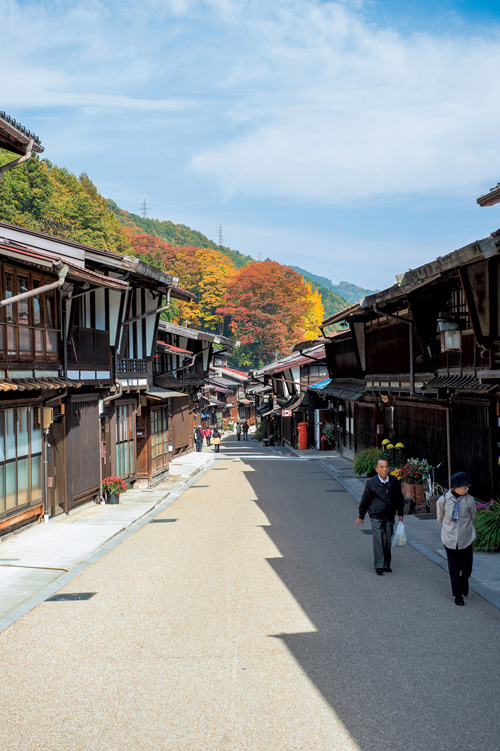
The smell of sweet grapes wafts down the street. Located at the southern end of the Shinonoi Line, Shiojiri Station is connected to Tokyo through the Chuo East Line and to Nagoya through the Chuo West Line. It is said that the name came from the salt that was at one time carried through the area, whether it was going to the Pacific Ocean or to the Sea of Japan. The region boasts a long history of grape cultivation, and it is well-known as the only station in Japan where the platform has a grapevine trellis.
Asahi Village
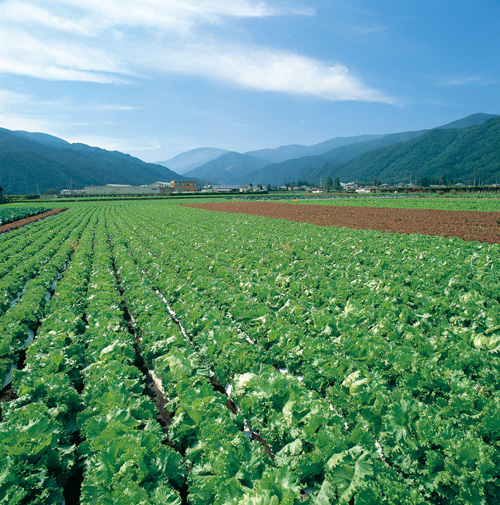
A bountiful store of greenery and nature awaits you. On the borders of Matsumoto, Shiojiri, and the Kiso area, Asahi Village is well-known as a producer of highland vegetables. In season, the fields spread out with greenery, forming a gorgeous contrast with the sky. It also offers camping in the great outdoors, woodworking, soba making, and, in the winter, facilities for skiing and skating.
Yamagata Village
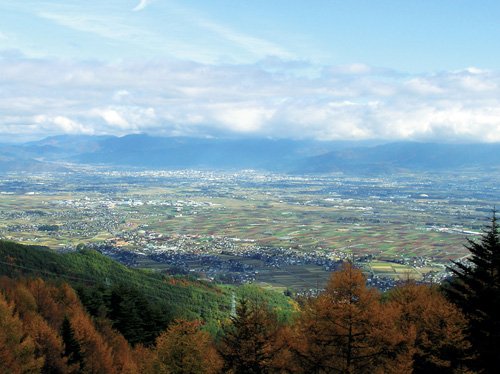
A lively village whose splendor belies its size. Located in the southwest region of the Matsumoto Plain at a height of approximately 700m, Yamagata is the smallest village in Nagano. The fertile earth provides a rich ground for agriculture. It is well-known for its yams, watermelons, and blueberries. At an elevation of 1,200m lies the Kiyomizu Highland, where one may enjoy the most stunning view of the Matsumoto plain from the temple of the same name, which is connected to the Kiyomizu Temple in Kyoto.
Matsumoto City
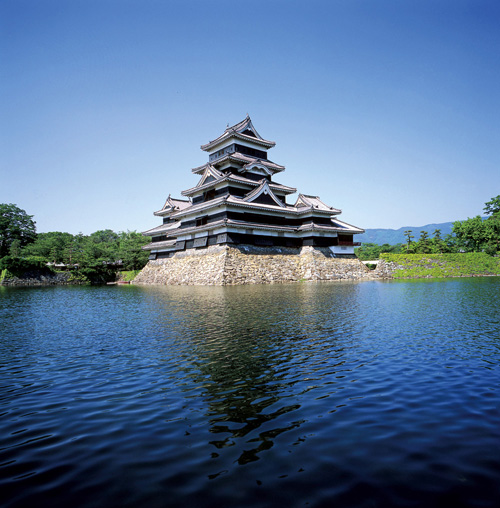
Matsumoto is the gateway to the Northern Japanese Alps. Matsumoto developed as a castle town centered around Matsumoto Castle, a national treasure. A place where history and nature are intertwined, it is surrounded by the natural landscape of a range of peaks, around 3,000m high, that form the Hotaka Mountains, as well as Mount Yari and Utsukushigahara Plateau. Matsumoto, which bills itself as the “city of long life,” is the gateway to the Northern Alps and areas such as Kamikochi, so it attracts many mountain climbers hoping to improve their health.
Azumino City
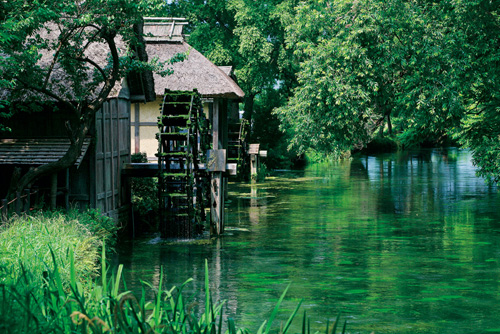
Grand mountains and pure water. An area featuring the magnificent Northern Alps and pastoral scenery, Azumino, symbolized by its cool, clear water, is offered as a stirring example of the primeval scenery of Japan. Take a walk while taking in the nostalgic vistas or discover the perfect scenery for a massive unfolding panorama and visit one of the numerous art museums, soba restaurants, or hot springs to fully take in a rich trove of art and cuisine as you enjoy the natural beauty of the four seasons.
Ikusaka Village
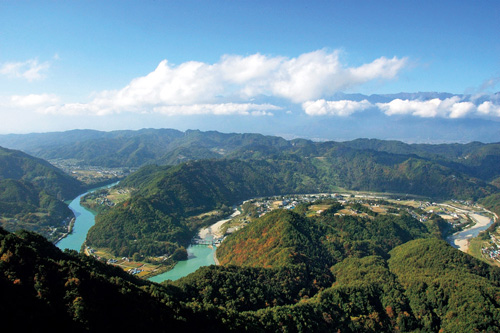
A mountain village preserving the scenery of older times. Whether you are into trekking, paragliding, or rafting on the Saigawa River, Ikusaka provides the perfect natural landscape for your outdoor experience. The picturesque scenery of Sanseiji offers a beautiful valley to view in any season. This mountain village, which retains a sense of nostalgia, offers cuisine born of the natural bounty of the region, and visitors may enjoy grape picking in autumn with the ripening of the Kyoho grape.
Chikuhoku Village
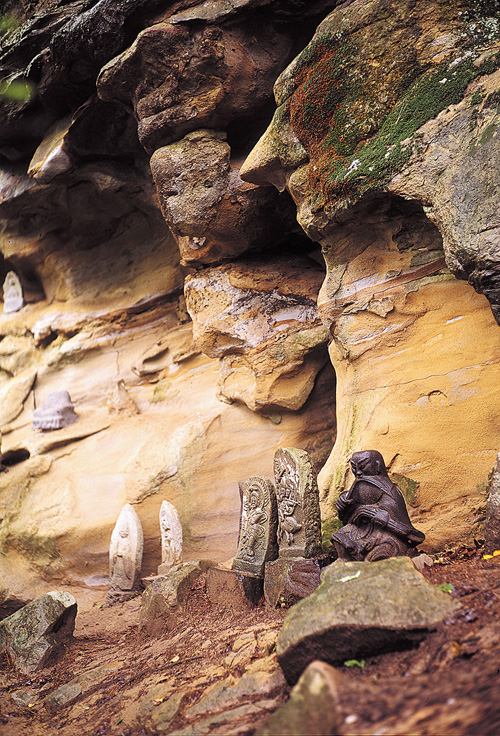
Will you listen to the tidings on the wind? This quiet farming village is located in almost the exact center between the cities of Nagano and Matsumoto. The village is proud of its rich natural surroundings, and the agricultural scenery is colored by the four seasons in turn: the spring brings rapeseed blossoms, early summer brings fresh greenery and the frenzied dance of fireflies, summer brings vegetable fields, autumn brings the turning of leaves, and winter a blanket of snow. “Will you listen to the tidings on the wind?” A journey through Chikuhoku Village awaits.
Omi Village
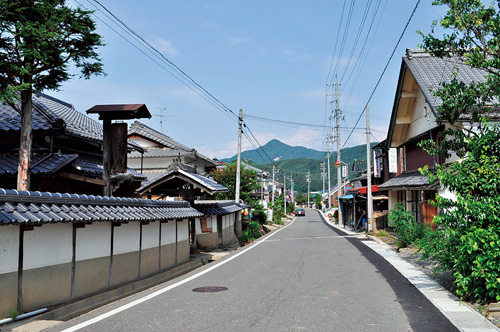
The nearly-forgotten primeval scenery of Japan. Between the pure rivers of Chikumagawa and Saigawa lies this highlands village located at the foot of the 1,447m tall Mt. Hijiri. We know from the fact that the name “Omi” appears in a record in Ise Shrine that the area has a history of over 1,000 years. Travelers would pass through since long ago on the road to the capital, and the area has retained its visage to this day. The abundant natural environment fosters a host of crops, and you can experience the wonder of that environment in its ever-changing aspects in spring, summer, fall, and winter.
